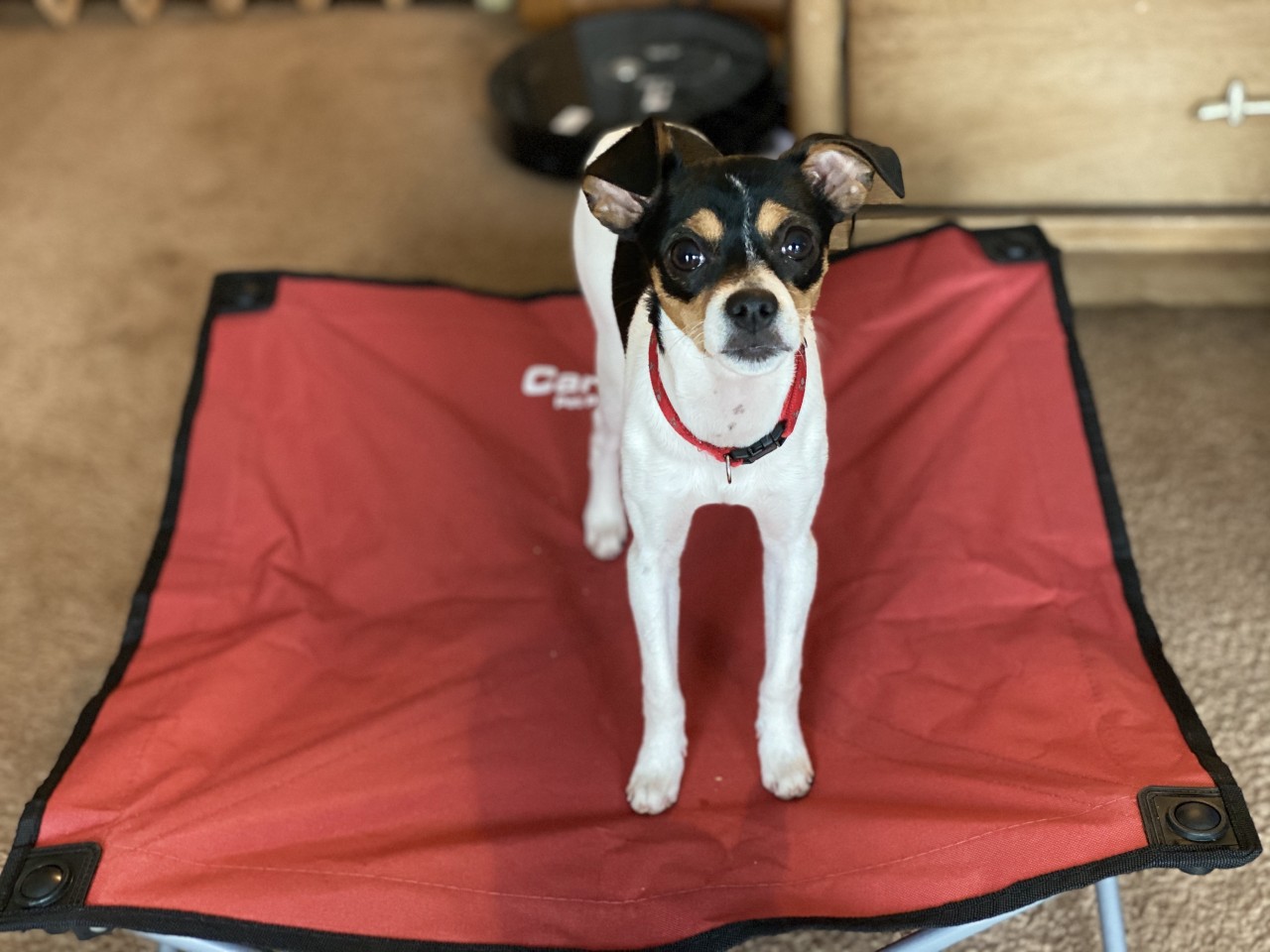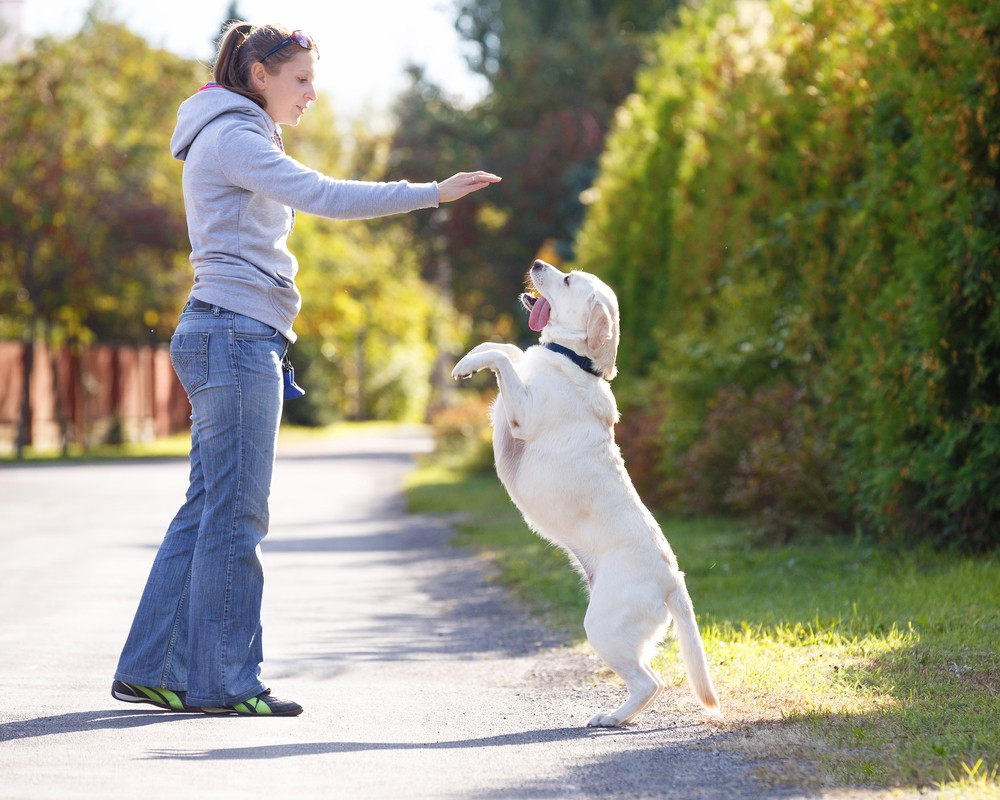Have you ever considered that reinforcement is actually a behavior, and can be taught, put on stimulus control and trained to fluency in the same ways? Chrissi shares that and more in this week's interview.
Everyone would like to get better scores in the ring! It might be surprising to learn that many points are lost to preventable things, like completing the sign incorrectly. Handler errors are by far the most common reason for deductions in rally. Read on to learn five of the most common handler errors that I see in AKC Rally.
Been missing the competition scene? Nicole and I talk about opportunities to title virtually in Rally — and things to consider when working on virtual titles!
A student is taking a private agility lesson at my facility. She finishes a particularly challenging sequence and turns toward me to talk about it. Meanwhile, her dog runs off and starts exploring the agility area on her own. While we chat, the dog circles the area, running through random tunnels or searching for treats. The handler finally calls her dog, but the dog is busy having fun.
Eventually, she collects her dog and puts her on leash, frustrated.
I am watching an online training video from one of my classes. The dog finishes a sequence of behaviors, and the handler hands him a treat and turns away, walking back to the area where she started. The dog eats the treat, looks at the handler, and seeing no connection, starts sniffing the ground. After a few seconds of this, the handler notices that her dog is not with her and scolds the dog, saying "get over here!"
As an instructor of both online and in-person classes, I regularly see my students disengage from their dogs while training. This disengagement does not usually occur while training the behaviors, but rather during the resets in between repetitions. I work very hard to maintain connection with my dog throughout our entire training session, and I don't want him to practice the cycle of disengaging and me having to get him back. I want my dog to be working with me the entire time that we are training, rather than possibly self-reinforcing by sniffing the ground or scavenging for treats, or building in other undesirable behaviors.
So how can we fix these all-too-common scenarios?
Can you stay focused and stick to your plan even when your nerves raise their head or do other areas of your life intrude into the ring? Megan and I talk about how to train your brain to be competition ready.
Story time! A small look into a huge turning point in my competitive career over the course of one weekend. I had been working with my current mentor for four months prior to attending a major competition. Read on to learn about the events surrounding that day, and how it was my mental skills that brought me across the finish line.
Collection, extension, and teaching agility foundations — Loretta and I talk about training agility skills so your dog can achieve their full potential.
Dogs that compete in agility trials must learn to focus in an incredibly energetic and electric environment. Barking dogs, running dogs, clapping, cheering, shouting spectators, handlers running, and many people and dogs surrounding the rings create a unique environment. It can be one of the most challenging places for our dogs to perform.
And most of the dogs are not properly prepared when they start competing.
Agility trainers do a good job training obstacle performance and the handling needed for their dogs. But very few trainers train the skills that dogs need to effectively learn how to learn. That means that most dogs are not prepared to learn in classes or in seminars.
The skills needed to learn in an exciting sport like agility are not always understood. And when the dog is not prepared properly or the trainer does not understand the fallout that occurs without these skills, the dog will learn unwanted behaviors. Behaviors that stem from frustration, confusion, and/or stress in the dog.
This week we have on Dr. Lore Haug, one of the 45 presenters participating in the Lemonade Conference, to talk about theory and application of classical conditioning, and humane use of negative reinforcement!
It could even be that we unintentionally taught a bad habit, decided not to address it right that moment, or maybe we didn't encourage it but just ignored it. It happens - our dog training TO DO LIST is very long! We let some things go to focus on other skills and behaviors.
We want to spend more time developing desired behavior verses fixing unwanted behavior later on.
The power of antecedents and the therapeutic impact of nosework, from the Lemonade Conference presenter Peta Clarke!
Which is best: a clicker, a marker word or just handing over a cookie when the dog does something which makes us proud?
Ask yourself what are the goals for the training session.
If you're working on simple classical conditioning (for example: You want the dog to feel good in a new building) then hand over free cookies. Since the dog's consciousness of their behavior is irrelevant, there's no reason to use a clicker or a marker word. You simply want your dog to enjoy the situation – classical conditioning at work.
If you're working on a trained behavior that has an element of duration, but the actual moment that you choose to hand over the cookie is not relevant, then there is also no need for a marker. Just release from the formal work, hand over free cookies with praise, and go from there.
For example, if you're working on loose leash walking and the dog has been walking for a full minute without pulling, then there really is no specific moment to mark. You're just happy with a "period of time." Since this exact second is not different than the one before, a marker can't mark anything.
Props are there to help you TEACH a behavior... but often we get stuck, and continue using them for way too long! Julie shares her method for fading them from your training once they've served their purpose, so you can begin building those final behaviors!
A while ago I posted a blog about teaching dogs to keep their feet on the floor and off of people. That blog included an excellent video by Chirag Patel. In my opinion, his approach will work for a high percentage of dogs, especially puppies who are started correctly.
But some dogs are a bit different. These dogs are not showing normal, thinking behavior patterns when they are in the presence of new people, because they are "hyper greeters." In the presence of new people, they go over threshold.
"Over threshold" simply means that the dog is no longer able to make good (rational) decisions about their behavior. And since training assumes a rational participant who is maximizing good things and minimizing bad things, training often fails on dogs that are over threshold. Sad but true. The more time a dog spends over threshold, the more easily they end up in this bad place, which starts a nasty cycle.
A hyper greeter isn't a happy dog who simply loves everyone.
A hyper greeter is a dog with an uncontrollable need to get to people, yet the dog recognizes that their behavior is not appreciated. That leads to conflict, and conflict is bad, because dogs in conflict go over threshold easily.
Marjie Alonso, executive director of IAABC, joins me to talk about a little bit of this, a little bit of that... including the Pandemic Handbook, positive training, and what it is she does all day for IAABC.
You're picking up after the kids in the family room when you hear sounds coming from the kitchen….where your dinner roast is cooling on the countertop. You have a sinking feeling that your dog is about to make a meal out of your dinner.
You're a "positive" trainer who doesn't use fear, intimidation, or physical force to train your dog.
You enter the kitchen to see what is happening and your worst fear is confirmed – your dog is well up on the kitchen counter and heading for your roast.
What do you do?
Wait a sec – I have to change that around a bit, because I have no idea what you do. Let's talk about what I'd do.
So, what would I do?
How does training horses differ from training dogs? Are there overlooked side effects of introducing positive training to our equine friends? Sharon Carroll and I talk about the reality of training horses.
Thinking about stepping into the ring can be overwhelming and scary, but knowing that you and your dog are prepared will ease your nerves. Read on to find out if you are really ready to get in the ring!
Our dogs are innately born with the skills they need to track a scent — so in this episode Lucy and I discuss how to take that and channel it for competition!
Once a year, I teach a class called Canine Sports Medicine for the Performance Dog Handler. It is not just for performance dog handlers. Anyone who has a dog that is active, that has had an injury, or that will have an injury, will benefit from this class.
Everyone wants to do the best for their dogs. Many of us are willing and able to travel several hours and spend several thousand dollars to treat our dog's injury. The problem is, if we don't know what is wrong, we can't fix it. In my experience, the weakest link in treating injuries in dogs is getting the correct diagnosis.
By accepting you will be accessing a service provided by a third-party external to https://www.fenzidogsportsacademy.com/




